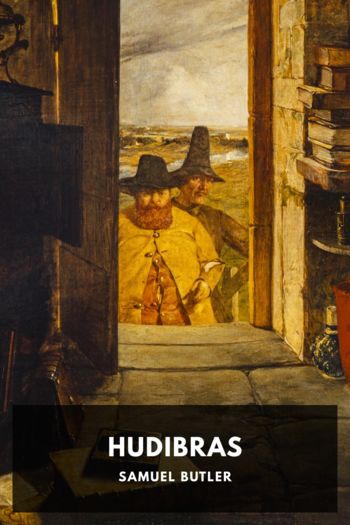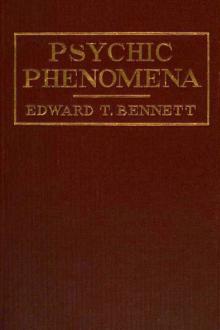The Diary by Samuel Pepys (children's ebooks online TXT) 📕

Description
Pepys’ Diary is an incredibly frank decade-long snapshot of the life of an up and coming naval administrator in mid-17th century London. In it he describes everything from battles against the Dutch and the intrigues of court, down to the plays he saw, his marital infidelities, and the quality of the meat provided for his supper. His observations have proved invaluable in establishing an accurate record of the daily life of the people of London of that period.
Pepys eventually stopped writing his diary due to progressively worse eyesight, a condition he feared. He did consider employing an amanuensis to transcribe future entries for him, but worried that the content he wanted written would be too personal. Luckily for Pepys, his eyesight difficulties never progressed to blindness and he was able to go on to become both a Member of Parliament and the President of the Royal Society.
After Pepys’ death he left his large library of books and manuscripts first to his nephew, which was then passed on to Magdalene College, Cambridge, where it survives to this day. The diary, originally written in a shorthand, was included in this trove and was eventually deciphered in the early 19th century, and published by Lord Baybrooke in 1825. This early release censored large amounts of the text, and it was only in the 1970s that an uncensored version was published. Presented here is the 1893 edition, which restores the majority of the originally censored content but omits “a few passages which cannot possibly be printed.” The rich collection of endnotes serve to further illustrate the lives of the people Pepys meets and the state of England’s internal politics and international relations at the time.
Read free book «The Diary by Samuel Pepys (children's ebooks online TXT) 📕» - read online or download for free at americanlibrarybooks.com
- Author: Samuel Pepys
Read book online «The Diary by Samuel Pepys (children's ebooks online TXT) 📕». Author - Samuel Pepys
Daughter of William, Duke of Hamilton, wife of Lord Carnegy, who became Earl of Southesk on his father’s death. She is frequently mentioned in the Mémoires de Grammont, and in the letters of the second Earl of Chesterfield. —B. ↩
The practice of striking tallies at the Exchequer was a curious survival of an ancient method of keeping accounts. The method adopted is described in Hubert Hall’s Antiquities and Curiosities of the Exchequer, 1891. The following account of the use of tallies, so frequently alluded to in the Diary, was supplied by Lord Braybrooke. Formerly accounts were kept, and large sums of money paid and received, by the King’s Exchequer, with little other form than the exchange or delivery of tallies, pieces of wood notched or scored, corresponding blocks being kept by the parties to the account; and from this usage one of the head officers of the Exchequer was called the tallier, or teller. These tallies were often negotiable; Adam Smith, in his Wealth of Nations, book ii, ch. xi, says that “in 1696 tallies had been at forty, and fifty, and sixty percent discount, and banknotes at twenty percent.” The system of tallies was discontinued in 1824; and the destruction of the old Houses of Parliament, in the night of October 16th, 1834, is thought to have been occasioned by the overheating of the flues, when the furnaces were employed to consume the tallies rendered useless by the alteration in the mode of keeping the Exchequer accounts. ↩
John Burrowes, Navy slopseller to the Navy Commissioners. ↩
A copy of Sir William Petty’s will, dated 1685, is in the British Museum (Add. MSS., No. 15,858, fol. 109). —B. ↩
Mary Ducane, wife of James Houblon. They were married November 11th, 1620, and had twelve children. —B. ↩
“Two experiments were made for the finding out a way to breathe under water, useful for divers.” The first was on a bird and the second on “a kitling” (Birch’s History, vol. ii, p. 25). ↩
Jane, daughter to Sir Robert Needham, is frequently mentioned in the Grammont Memoirs, and Evelyn calls her “that famous and indeed incomparable beauty” (Diary, August 2nd, 1683). Her portrait is in the Royal Collection amongst the beauties of Charles II’s Court. Sir Robert Needham was related to John Evelyn. ↩
Edmund Waller, born March 3rd, 1605, died October 21st, 1687. ↩
Clement Spelman, son of Sir Henry Spelman the antiquary. He was appointed Cursitor Baron of the Exchequer in 1663, and occupied the office till March, 1679. He died in the following June. ↩
In a letter of March 22nd, 1664–65, from the Duke of York to the Duke of Albemarle, on the power he assigns to him in his absence, printed in Memoirs of Naval Affairs, etc., 8vo., 1729, p. 51. On the 23rd the Duke of York assumed the command of the fleet against the Dutch. —B. ↩
This was probably the Reports from 14 Elizabeth to 13 James I of Sir Edward Coke, and not his Institutes of the Laws of England. ↩
Blank in MS. ↩
Sir Charles Berkeley, Viscount Fitzharding (1663), and Earl of Falmouth (1665), killed in the sea-fight, June, 1665. ↩
This rumour was probably unfounded, as her son George Fitzroy (created Duke of Northumberland, 1683) was born December 28th of this year. ↩
Now first acted. Betterton took the character of Solyman the Magnificent, and Mrs. Betterton, Roxolana. There was an earlier tragedy of this name, by Fulk Greville, Lord Brooke. ↩
Nell Gwynne. ↩
Rebecca Marshall. ↩
John Tooker, messenger to the Navy Commissioners. ↩
The French ambassadors were Henri de Bourbon, Duc de Verneuil, natural son of Henry IV and brother of Henrietta Maria, and M. de Courtin. —B. ↩
St. Gabriel’s Fenchurch, “in the midst of Fenchurch Street,” opposite Cullum Street. The ground on which it stood was laid into the highway or street. The church was destroyed in the Great Fire, and was not rebuilt. ↩
Sir Edward Dering, of Surrenden Bering, Kent, which county he represented frequently in parliament. He was the second baronet of his family, and some time one of the Lords of the Treasury. He died in 1684. —B. ↩
The Earl of Southampton. ↩
George Waterman, Sheriff of London, afterwards knighted, and Lord Mayor, 1672. —B. ↩
Rear-Admiral Sir Thomas Tyddiman was attached to Lord Sandwich’s squadron. This report turned out to be a canard. He died in 1668. ↩
Edward Stillingfleet. He was then Preacher of the Rolls Chapel, and was this year presented to the rectory of St. Andrew’s, Holborn; Dean of St. Paul’s, 1678; Bishop of Worcester, 1689. He died of the gout, March 27th, 1699. ↩
Captain Silas Taylor. ↩
This is the celebrated “Charta Eadgari R. de Oswaldeslawe,” dat. Gloucester, December 28th, 964, mentioning not only the dominion of the sea, but also that Edgar had subdued the greatest part of Ireland, a piece of history which rests solely on the authority of this instrument.





Comments (0)